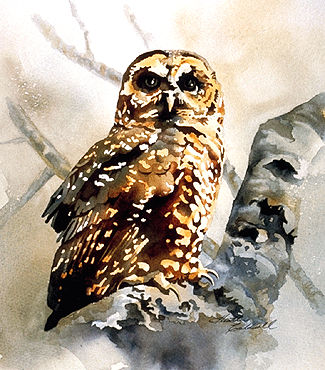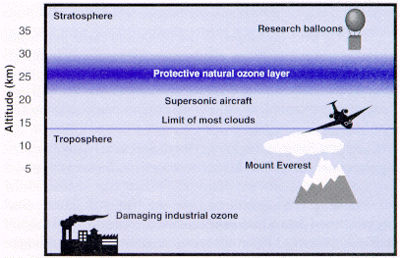Browse "Things"
-
Article
Ottawa Treaty
The Convention on the Prohibition of the Use, Stockpiling, Production and Transfer of Anti-Personnel Mines and on their Destruction — better known as the Ottawa Treaty or the Mine Ban Treaty — resulted from Canada’s leadership and its cooperation with the International Campaign To Ban Landmines (ICBL). In 1992, six non-governmental organizations launched an awareness campaign with the goal of banning landmines worldwide. In October 1996, at the first Ottawa Conference, Canadian minister of Foreign Affairs Lloyd Axworthy launched the Ottawa Process, which led to the ratification of the Mine Ban Treaty, signed by 122 countries at the Second Ottawa Conference in December 1997. The Ottawa Process was an innovative, unprecedented initiative that required a strategic partnership among countries, non-governmental organizations, international groups and the United Nations.
"https://d2ttikhf7xbzbs.cloudfront.net/media/media/52770ea6-6253-484f-b6a8-cca4a888898f.jpg" // resources/views/front/categories/view.blade.php
https://d2ttikhf7xbzbs.cloudfront.net/media/media/52770ea6-6253-484f-b6a8-cca4a888898f.jpg
-
Macleans
Ottawa's Ambitious Agenda to Expand Power
IT WASN'T QUITE what Paul MARTIN had promised. Instead of an uplifting exercise in televised democracy, his summit with the premiers lapsed into behind-closed-doors horse trading.This article was originally published in Maclean's Magazine on September 27, 2004
"https://development.thecanadianencyclopedia.ca/images/tce_placeholder.jpg?v=e9dca980c9bdb3aa11e832e7ea94f5d9" // resources/views/front/categories/view.blade.php
https://development.thecanadianencyclopedia.ca/images/tce_placeholder.jpg?v=e9dca980c9bdb3aa11e832e7ea94f5d9
-
Macleans
Ottawa's Pension Reform Plans
Barely five feet tall, firmly "over 65," Lillian Morgenthau can throw a political punch that would bring most politicians to their knees.This article was originally published in Maclean's Magazine on September 29, 1997
"https://development.thecanadianencyclopedia.ca/images/tce_placeholder.jpg?v=e9dca980c9bdb3aa11e832e7ea94f5d9" // resources/views/front/categories/view.blade.php
https://development.thecanadianencyclopedia.ca/images/tce_placeholder.jpg?v=e9dca980c9bdb3aa11e832e7ea94f5d9
-
Macleans
Ottawa's Referendum Strategy
On a day when Premier Jacques Parizeau and more than 1,000 of his closest sovereigntist friends were meeting for an occasion they deemed "historic," the man most of them consider Quebec's constitutional devil incarnate was less than 25 km away, doing his best to ignore them.This article was originally published in Maclean's Magazine on September 18, 1995
"https://development.thecanadianencyclopedia.ca/images/tce_placeholder.jpg?v=e9dca980c9bdb3aa11e832e7ea94f5d9" // resources/views/front/categories/view.blade.php
https://development.thecanadianencyclopedia.ca/images/tce_placeholder.jpg?v=e9dca980c9bdb3aa11e832e7ea94f5d9
-
Article
Otter
The river otter (Lutra canadensis) occurs throughout North America except in desert and arid tundra regions. In Canada it is scarce, except along the BC coast, where it is abundant and often wrongly identified as a sea otter.
"https://d2ttikhf7xbzbs.cloudfront.net/media/media/625e79c4-b2ca-42ef-846d-8c91d446d22b.jpg" // resources/views/front/categories/view.blade.php
https://d2ttikhf7xbzbs.cloudfront.net/media/media/625e79c4-b2ca-42ef-846d-8c91d446d22b.jpg
-
Article
Otto Higel Co. Ltd.
Otto Higel Co. Ltd. Toronto manufacturer of piano and organ supplies. The company was founded in 1896 by Otto Higel (b Silesia, Germany, 1869, d Toronto 2 Jul 1930), who had bought the Toronto piano action and key manufacturing business of F.
"https://development.thecanadianencyclopedia.ca/images/tce_placeholder.jpg?v=e9dca980c9bdb3aa11e832e7ea94f5d9" // resources/views/front/categories/view.blade.php
https://development.thecanadianencyclopedia.ca/images/tce_placeholder.jpg?v=e9dca980c9bdb3aa11e832e7ea94f5d9
-
Macleans
Our Dying Seas
This article was originally published in Maclean’s magazine on October 5, 1998. Partner content is not updated.
"https://development.thecanadianencyclopedia.ca/images/tce_placeholder.jpg?v=e9dca980c9bdb3aa11e832e7ea94f5d9" // resources/views/front/categories/view.blade.php
https://development.thecanadianencyclopedia.ca/images/tce_placeholder.jpg?v=e9dca980c9bdb3aa11e832e7ea94f5d9
-
Article
Overlanders of 1862
The Overlanders of 1862 were a group of some 150 settlers who travelled from Fort Garry (now Winnipeg, Manitoba) to the interior of British Columbia, following the Cariboo Gold Rush. They were led by Thomas McMicking of Stamford Township, Welland County, Canada West [Ontario].
"https://d2ttikhf7xbzbs.cloudfront.net/media/new_article_images/CatherineSchubert/Tales_Campfire_Hind.jpg" // resources/views/front/categories/view.blade.php
https://d2ttikhf7xbzbs.cloudfront.net/media/new_article_images/CatherineSchubert/Tales_Campfire_Hind.jpg
-
"https://d2ttikhf7xbzbs.cloudfront.net/media/media/7d4c7ead-e59d-4d15-a88a-100703dd253f.jpg" // resources/views/front/categories/view.blade.php
https://d2ttikhf7xbzbs.cloudfront.net/media/media/7d4c7ead-e59d-4d15-a88a-100703dd253f.jpg
-
Article
Own the Podium
Own the Podium is a non-profit organization that assists national sports bodies in Canada with their investment and training strategies. Based in Ottawa and Calgary, the program provides financial assistance to high-performance Canadian athletes and coaches. It enables them to compete as well as possible at the Olympic and Paralympic Games, with the goal of medalling (reaching the podium) as much as possible. It was created in 2005, in advance of the 2010 Olympic Winter Games in Vancouver. Own the Podium is funded by the Government of Canada, the Canadian Olympic Committee, the Canadian Paralympic Committee and the Canadian Olympic Foundation.
"https://d2ttikhf7xbzbs.cloudfront.net/media/media/91155314-b1f0-4655-95da-9be32d385be6.jpg" // resources/views/front/categories/view.blade.php
https://d2ttikhf7xbzbs.cloudfront.net/media/media/91155314-b1f0-4655-95da-9be32d385be6.jpg
-
Article
Oyster
Oyster is a common name for bivalve (hinged shell) molluscs, including true oysters (order Ostreoida) and tropical pearl oysters (order Pterioida), found chiefly in temperate and warm shallow waters.
"https://d2ttikhf7xbzbs.cloudfront.net/media/media/6a58f82b-ba7c-49c1-aa61-19d39fc58887.jpg" // resources/views/front/categories/view.blade.php
https://d2ttikhf7xbzbs.cloudfront.net/media/media/6a58f82b-ba7c-49c1-aa61-19d39fc58887.jpg
-
Article
Oystercatcher
Oystercatcher is a name given to 11 species of large shorebirds of the family Haematopodidae.
"https://d2ttikhf7xbzbs.cloudfront.net/media/media/63d6a4bc-8c16-469e-85e3-feaad1973eab.jpg" // resources/views/front/categories/view.blade.php
https://d2ttikhf7xbzbs.cloudfront.net/media/media/63d6a4bc-8c16-469e-85e3-feaad1973eab.jpg
-
Article
Ozone Depletion
Ozone depletion is a chemical thinning of the OZONE LAYER in the stratosphere or upper atmosphere. Scientists determined in the 1970s that it is caused by ozone depleting substances (ODSs), particularly by the use of chlorofluorocarbons (CFCs).
"https://development.thecanadianencyclopedia.ca/images/tce_placeholder.jpg?v=e9dca980c9bdb3aa11e832e7ea94f5d9" // resources/views/front/categories/view.blade.php
https://development.thecanadianencyclopedia.ca/images/tce_placeholder.jpg?v=e9dca980c9bdb3aa11e832e7ea94f5d9
-
Article
Ozone Layer
The development of the ozone layer is thought to have been a significant factor permitting the evolution of life on Earth. Ozone is the main atmospheric gas that absorbs the biologically damaging part of the sun's ultraviolet radiation (UV radiation), known as UV-B (ultraviolet-biologically active).
"https://d2ttikhf7xbzbs.cloudfront.net/media/media/26ba232c-8118-479b-90f7-3cbcfb5175fe.jpg" // resources/views/front/categories/view.blade.php
https://d2ttikhf7xbzbs.cloudfront.net/media/media/26ba232c-8118-479b-90f7-3cbcfb5175fe.jpg
-
Article
Paardeberg Day
The Battle of Paardeberg was the first time men in Canadian uniform, fighting in a Canadian unit, made war overseas. It also inspired one of the first remembrance ceremonies in Canada: from 1900 until the end of the First World War, Canadians gathered not on November 11, but on February 27 — Paardeberg Day — to commemorate the country’s war dead and its achievements in South Africa (see also Remembrance Day in Canada).
"https://d2ttikhf7xbzbs.cloudfront.net/media/new_article_images/paardeberg/Paardeberg 2.jpg" // resources/views/front/categories/view.blade.php
https://d2ttikhf7xbzbs.cloudfront.net/media/new_article_images/paardeberg/Paardeberg 2.jpg
